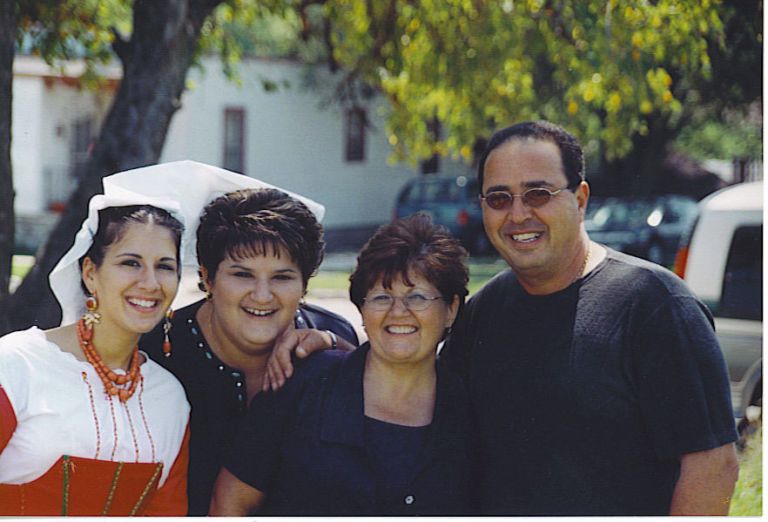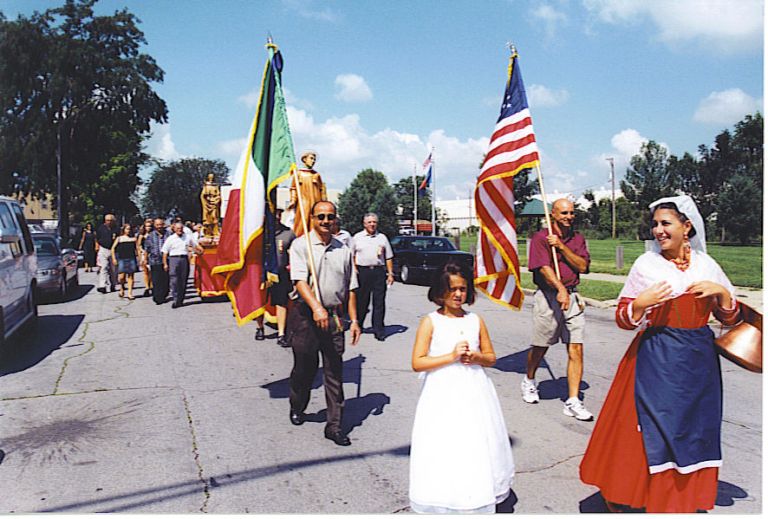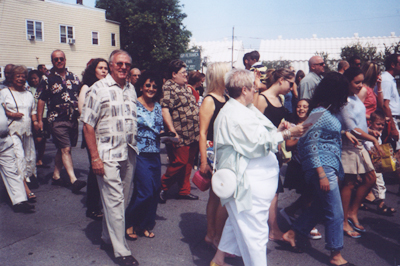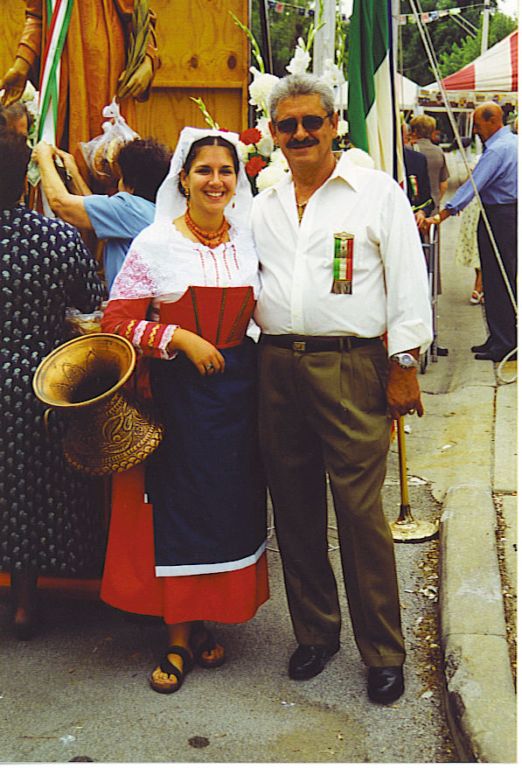San Lorenzo Festival
Around the Feast of St. Lawrence, August 10, every year, on Sunday the people gather at the Amaseno Lodge, over on 24th street. Many relatives and friends also come, as well as guests. The crowd gathers in front of the lodge, and the procession begins about 10:30 a.m. The procession goes north to 22nd street and then east to Portland, then to the San Rocco Oratory itself. Accompanied by the sirens of fire engines, the procession is an object of interest for the Mexican American neighbors of the Italians. The movement is somewhat chaotic, with children coming and going, as well as assorted singing in both Italian and English, as well as banners, regional clothing, and other distinctive elements of celebration. The procession is led by a crucifer, servers with candles, and a priest or two.
Historically, for a long time, acclamations were never recited; they were always sung or shouted. That's the nature of such phrases as
- Alleluia.
- Amen.
- Hosanna.
- Te rogamus, audi nos. (="Lord, we beg you, hear our prayer.")
- Kyrie, eleison.
Now, in the course of the San Lorenzo procession, an individual may shout out "Viva San Rocco!" Everybody then shouts back, "Viva San Rocco!" with great volume. San Lorenzo merits a similar acclamation. While probably unnerving to Northern Europeans, this is actually an ancient and traditional practice in the Catholic Church: acclamations are part of our heritage.
Back in Amaseno, Italy, the statue of St. Lawrence is carried on the shoulders of young, strong men. Here, both San Lorenzo and San Rocco are pulled on carts. On arrival at the oratory, there is an overflow crowd, with people spilling outside. The two statues are put up front in places of honor. The litany of St. Rocco is sung, with the response, "pray for us." During Mass, at the preparation of the gifts, after the altar is incensed, the two statues are incensed as well, then the people. One of the Scripture readings is proclaimed by a lector in Italian. The three collects of the day are said in Italian; the Eucharistic Prayer is the Roman Canon, in Latin. If we have an Italian priest present, the sermon would also at least partially be in Italian. The majority of people present no longer speak Italian, so for the Scripture reading and the prayers in Italian, they would rely on the printed word in their hands, in the Leaflet Missal.
At the end of Mass, bread is blessed with holy water and distributed to the people. A similar custom exists in both Byzantine and Coptic churches in the East, at the end of every Sunday Mass. The Greeks call the blest bread antidoron. (The ancient Roman Canon includes a blessing just before the conclusion, for such items as blest bread: per quem haec omnia, Domine, semper bona creas, sanctificas, vivificas, benedicis, et praestas nobis.)
After the liturgy, the people go back to the Amaseno Lodge, for considerable feasting and celebration, the rest of the day. Picnic tables are usually necessary, as well as tents, to accommodate the large number of people present.
The San Lorenzo Festival here has its origins in the 1950s. In part, there were some new immigrants who were happy to have the same tradition as at home, in Italy. However, there were many more Italians of the third and fourth generation who wanted to recover what they could of their heritage. Typical of such Latin celebrations, the distinction between liturgy and life is not always clear. For both Italians and Mexicans, religious practices are expressed in the culture; and some extra-religious practices infiltrate the liturgy itself.
For example, on this day, at the beginning of Mass, within the San Rocco Oratory, there is invariably substantial conversation. A sung litany, especially in honor of the saints of the day, is an effective means of providing a transition from normal disorder to the world of prayer. Here, in context, is it clear why litanies are meant to be sung, in part so the invocations can be heard, in part so that they have the effect of unifying the congregation through song. Similarly, at Mass at San Rocco, the Kyrie-litany and the General Intercessions are never recited; they are always sung, in dialogue.
In any case, for all its chaos, the San Lorenzo Festival procession down 22nd Street probably comes closest to the processions that took place regularly in the early Church, in Rome, Alexandria, and Constantinople. Such processions are dramatic, powerful, physiological celebrations, of both faith and culture, liturgy and life.














 top
top